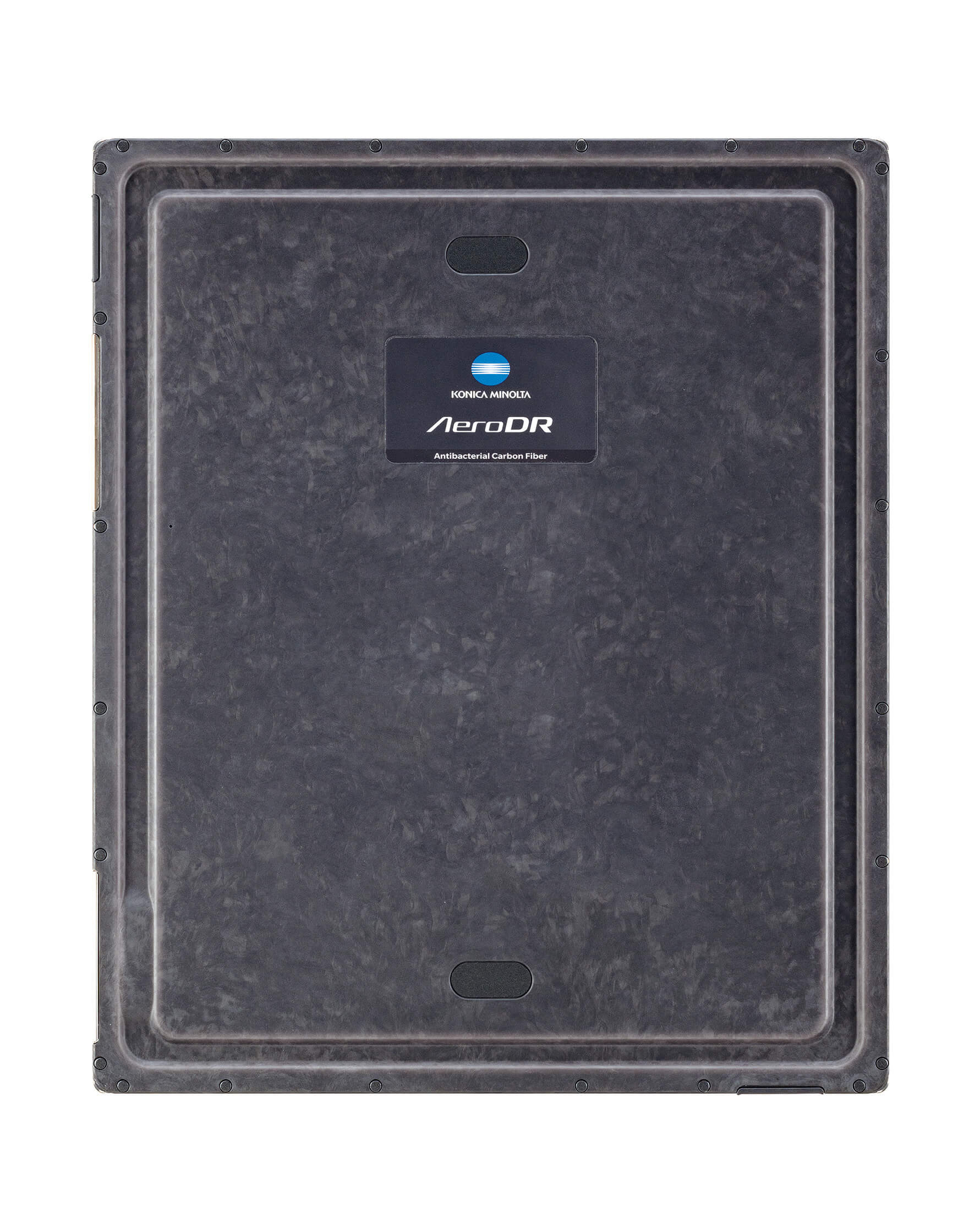News Releases
Konica Minolta to Launch AeroDR 3 1417HL,
a Lightweight Cassette-type Digital X-ray System
for High-resolution Images at Low Dose Rate
TFT Reduces Weight to 1.9 kg, including Built-in Battery
March 10, 2022
Tokyo (March 10, 2022) – Konica Minolta, Inc. (Konica Minolta) today announced that it will launch the AeroDR 3 1417HL, a cassette-type digital X-ray system.
Konica Minolta’s AeroDR family of cassette-type DR*1 systems has been used in diverse settings, including at the patient’s bedside, operating rooms and radiography rooms, and has earned a high reputation among medical professionals for its ease of handling and ability to provide high-resolution images.
The conventional cassette-type DR offers users enhanced image quality and speed compared to CR*2, but weighs more than CR. The AeroDR 3 1417HL, even with its built-in battery, weighs only 1.9 kg, lighter*3 than CR, while inheriting the AeroDR family’s ability to deliver immediate results and capture high-quality images. The lighter weight and more secure hand grip help enhance work efficiency for medical professionals.
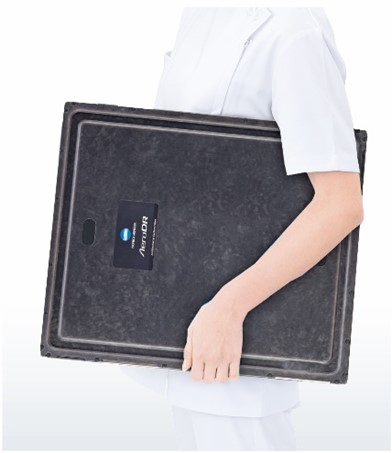
Values Offered by the AeroDR 3 1417HL System
1. Less stressful to perform radiography, thanks to reduced weight and enhanced hand grip stability
A cassette-type DR is usually operated and carried with one hand, and so should be light enough for radiologists to handle with ease. In developing the AeroDR 3 1417HL, Konica Minolta succeeded in reducing the weight to 1.9 kg, making it lighter than the company’s CR cassettes, by employing thin film substrate TFT*4 for the first time in its AeroDR family and optimizing the internal design.
To make the device easier to hold, Konica Minolta made the recess on the edge of the cassette’s rear surface 4 mm deep, which allows radiologists to hold it securely even when it is covered with a plastic bag to protect against Covid-19. Along with its light weight, this reduces the stress of performing radiography and the fear of dropping it, so radiologists can focus on their work.
The light weight and secure grip also help to improve the efficiency and reduce the time for taking radiographic images, benefiting patients.
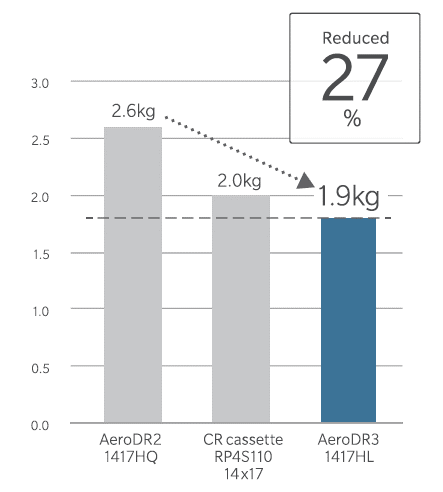

2. Capturing highest quality images with lowest radiation dose in the AeroDR family
A CsI scintillator (fluorescent substance)*5 critically affects the quality of images captured by DR. The CsI scintillator in the AeroDR family uses Konica Minolta’s proprietary vapor deposition technology developed for its CR cassettes.
The AeroDR 3 1417HL achieves a DQE*6 of 59%, the highest in the AeroDR family, by increasing the CsI scintillator’s thickness, introducing IC noise reduction technology, and making the inner side of the X-ray beam entrance surface thinner to reduce the loss of X-ray dose reaching the scintillator. The sensor panel’s pixel size of 100 μm delivers outstanding resolution, which, coupled with the high DQE, produces high-quality images even with a low radiation dose.
As a result, the AeroDR3 1417HL has succeeded in reducing the dose by approximately 25% compared to its preceding model, AeroDR 2, and by more than 60% compared to CR, thus lowering patients’ radiation exposure.
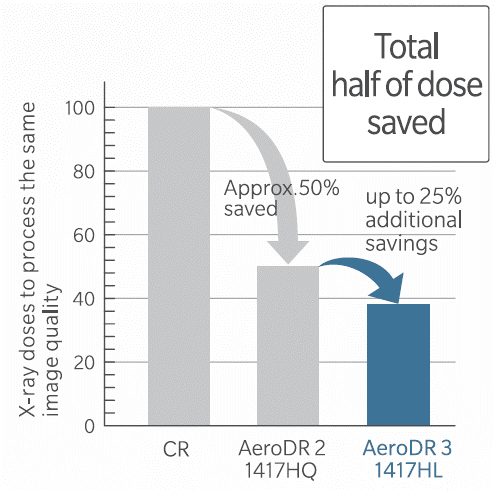
3. Reduced risk of infection thanks to durable antibacterial property
An antibacterial material containing Ag (silver) is kneaded into the enclosure material of AeroDR3 1417HL. The antibacterial agent is evenly dispersed in the material in the thickness direction. Antibacterial property is not lost due to scratches in daily use.
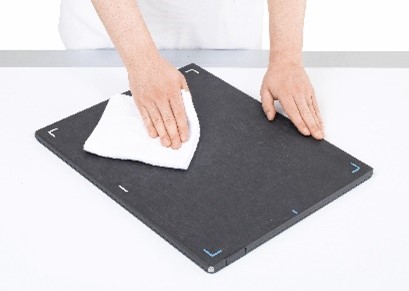
Konica Minolta remains committed to delivering solutions tailored to the needs of medical professionals and patients to contribute to reliable, safe and high-quality healthcare services.
Main Specifications of the AeroDR 3 1417HL Cassette-type Digital X-ray System
| Type | Cassette-type wireless flat-panel detector |
|---|---|
| Name | AeroDR 3 1417HL |
| Scintillator (fluorescent substance) | Cesium Iodide (CsI) scintillator |
| Dimensions | 384 (W) x 460 (D) x 15 (H) mm |
| Weight | 1.9kg |
| Pixel size | 100/200μm |
| Load resistance | Surface load: 400 kg over the entire effective image area Two side support loads: 130 kg |
| Dust and water resistance rating*7 | IP56 |
| Battery type | Lithium-ion capacitor (built-in) |
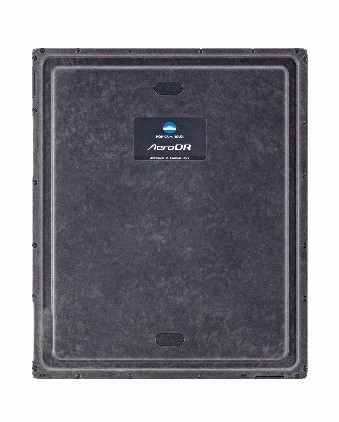
*1:DR stands for Digital Radiography, which receives X-ray radiation on the sensor panel and directly captures digital images. In general, DR is superior to CR in terms of image quality and responsiveness.
*2:CR stands for Computed Radiography, which produces an image on an imaging plate (IP) that replaces conventional X-ray film, and scans and digitalizes the images.
*3:Compared to Konica Minolta’s CR cassette of the same size, CR Cassette RP4S110 1417.
*4:TFT stands for Thin Film Transistor, which is a switch used to read out electrical signals from the pixels of the sensor panel.
*5:A Cesium Iodide (CsI) scintillator (fluorescent substance) converts X-rays into visible light (fluorescent light). By enhancing its efficiency, clearer radiographic images can be obtained.
*6:DQE stands for Detective Quantum Efficiency, which is a measure of how effectively X-rays are used to create an image. Higher DQE means X-ray photons are captured more effectively, increasing the resolution with a lower dose.
*7:Ingress Protection (IP) is a standard for dust and water resistance defined by the International Electrotechnical Commission (IEC). The IP rating does not guarantee that the model is perfectly dust- and water-resistant, or that damage or failure will never occur.
AeroDR 2 is a common name for AeroDR system 2 1417HQ (P-51).


